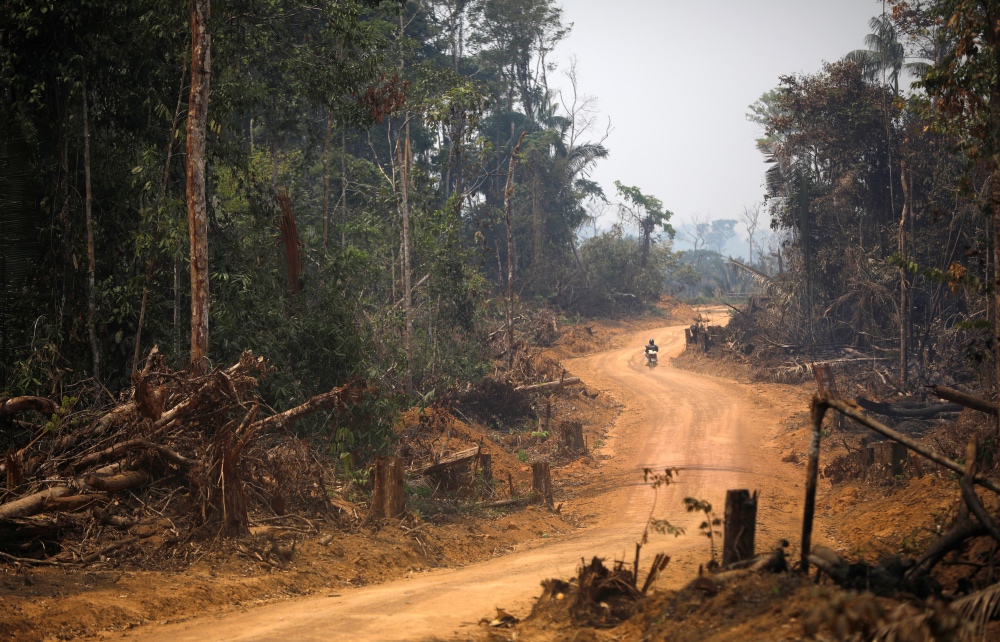Rome, Italy
Thomson Reuters Foundation
Forests face an increased risk of being cut down and degraded as a result of the economic fallout from the coronavirus pandemic, a senior UN official said on Friday.
For millions of poor people who have lost casual work in cities and are returning to their homes in rural areas, “the only social safety net they have is the waters, the land and the forest”, Mette Wilkie told the Thomson Reuters Foundation.

A view of a deforested area at the National Forest Bom Futuro in Rio Pardo, Rondonia state, Brazil, on 12th September, 2019. PICTURE: Reuters/Bruno Kelly
That makes it more likely trees will be felled for food and fuel because a third of the world’s people still depend on wood to cook, said Wilkie, director of the forestry division at the UN Food and Agriculture Organization.
The warning came as the FAO and United Nations Environment Programme launched The State of the World’s Forests 2020 report, on the International Day for Biological Diversity.
Here are 10 key facts from the report:
1. The emergence of new infectious diseases, such as COVID-19, may be linked to forest loss and humans moving into forest areas, exposing people to wildlife and facilitating the transition of viruses from animals to humans.
2. Between 2015 and 2020, the world lost an estimated 10 million hectares of forests per year, down from an annual 16 million hectares in the 1990s. While deforestation has slowed, progress has been uneven, with population growth driving a rise in Africa.
3. Since 1990, an estimated 420 million hectares of forest have been lost, more than three times the size of South Africa.
4. Farm expansion is the main driver of tropical deforestation, with 40 per cent coming from large-scale agriculture – mainly cattle ranching and planting of soy bean and oil palm. A third is from small-scale farming.
5. Forests cover only 31 per cent of the global land area but are home to 80 per cent of all amphibian species, 75 per cent of bird species, and 68 per cent of mammal species.
6. More than half the world’s forests are located in only five countries: Russia, Brazil, Canada, the United States and China.
7. Forests provide essential services human rely on. Three-quarters of accessible fresh water comes from forested watersheds, and 35 per cent of global food production benefits from animal pollination.
8. Around the world, one billion people depend on wild foods and 2.4 billion use wood for cooking, while more than nine out of 10 people living in extreme poverty depend on forests for at least part of their livelihoods.
9. Areas managed by Indigenous peoples account for about 28 per cent of the world’s land surface and include some of its most ecologically intact forests.
10. Globally, 18 per cent of forest areas are protected, but natural reserves are not sufficient to conserve biodiversity. They tend to be small, making it hard for species to migrate, and are vulnerable to climate change.
Sources: The State of the World’s Forests 2020, FAO, UNEP





